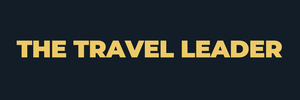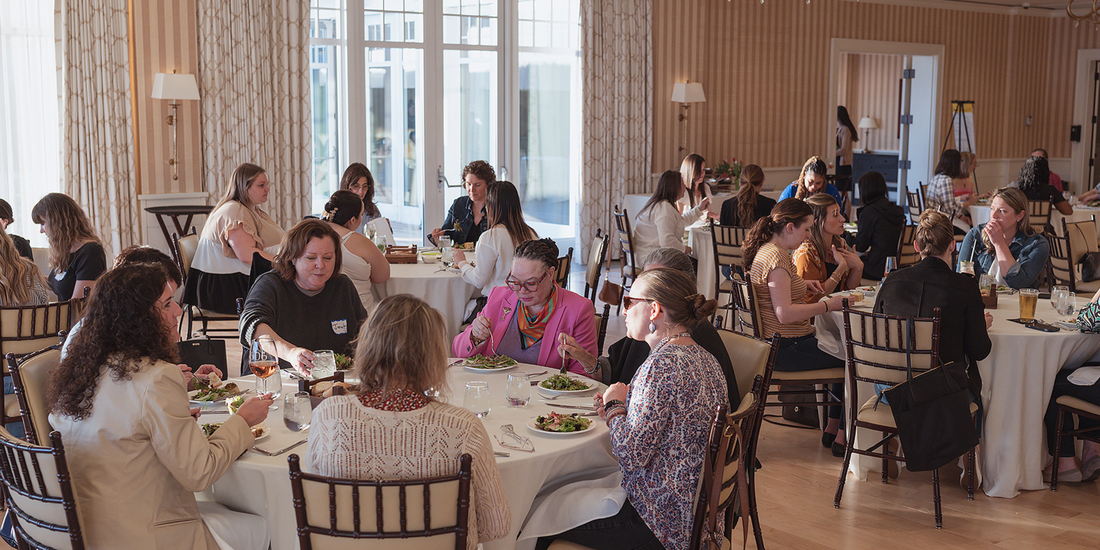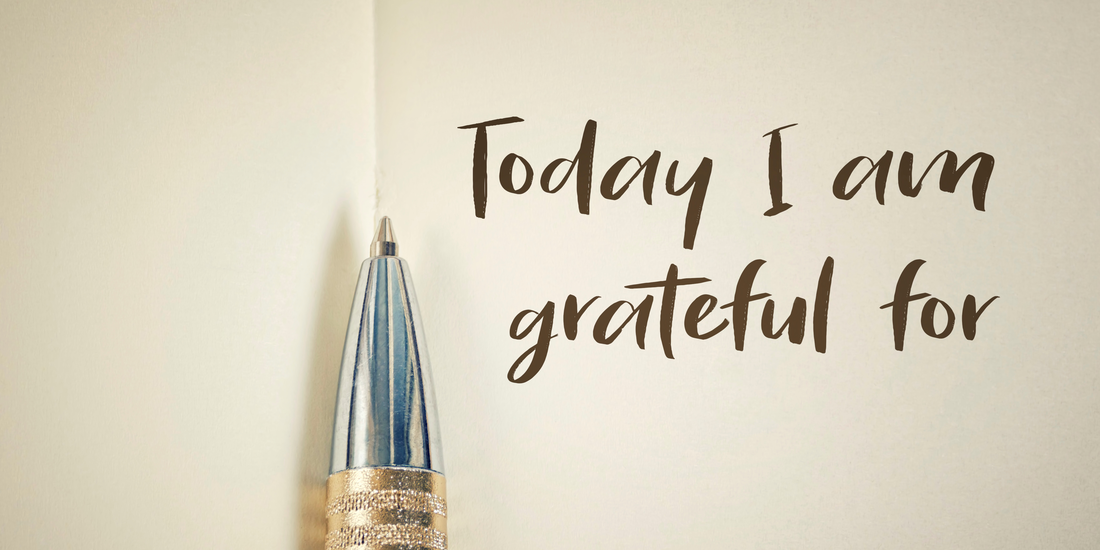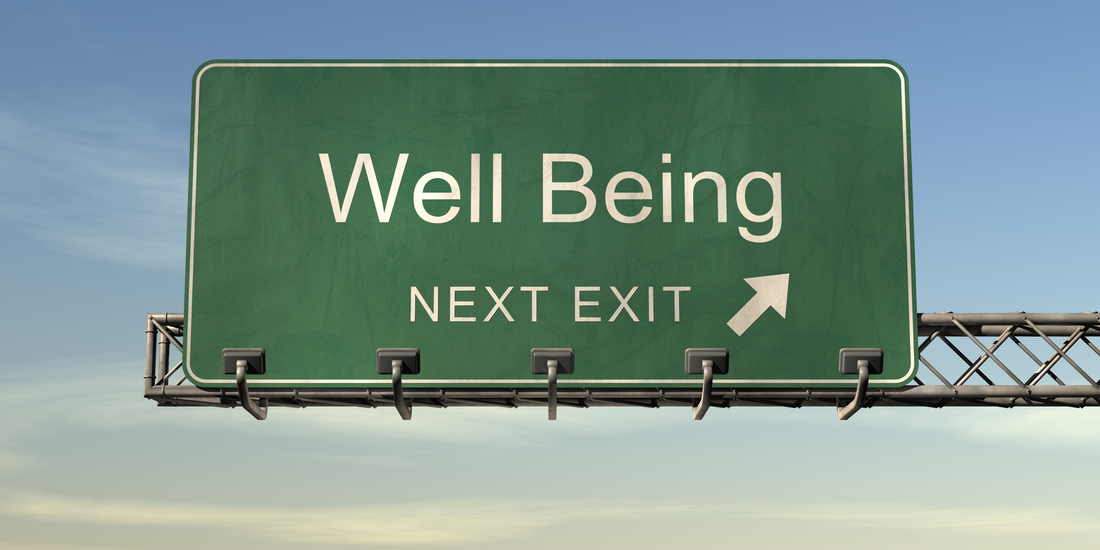|
Mistakes are opportunities to learn My 14 year old son recently got his first “real” summer job at a local coffee and lunch hot spot. “Real” as in, he’s learned life lessons like “what do you mean they take social security and Medicare out of my paycheck?” And real in the sense that taking on a new job requires lots of training, mistakes and learning. In his first couple of weeks, there have been mistakes a plenty. He’s showed up to work at the wrong time, rung up a customer incorrectly on the point of sale and spilled multiple smoothies and iced lattes. His supervisors have been understanding and empathetic. And, through all of it, he’s been eager to return each day and try again, each time performing a little better and adding more value as a team member. What would have happened if was reprimanded at the first sight of spilled milk? Would he have been as eager to go back to work each day? Would he be inclined to speak up and ask questions about something he didn’t understand? Probably not… Blame and shame can have dire consequences Unfortunately in the professional world, environments where mistakes and failure are severely frowned upon are all too common. Team members are disciplined and shamed. In environments like these, employee engagement is low and performance and innovation are lackluster. In her book “The Fearless Organization”, Amy Edmundson recounts several case studies demonstrating these poor results. On the worst days, these environments are breeding grounds for disasters and tragedy. In 2018 and 2019 a total of 364 passengers died in two major crashes involving the Boeing 737 max aircraft. During the investigation of the crashes it was found that the cause was related to a faulty design of its autopilot system. Boeing has since admitted that its employees withheld information about this design flaw during the initial certification process for the aircraft. Build psychological safety to foster learning and innovation In workplaces with high levels of psychological safety, team members feel safe to speak up, ask for help or admit mistakes without fear of blame or humiliation. On their best days, these environments foster creativity, learning and innovation. Leaders are critical to creating psychologically safe workplaces. One of the most critical factors in shaping this type of organizational culture is how mistakes and failures are framed. Instead of framing them as bad or detrimental to the organization, leaders de-stigmatize mistakes and facilitate team member growth by encouraging learning and forward movement.
When mistakes are seen as opportunities for learning rather than grounds for reprimand, employees are more likely to engage, innovate, and contribute meaningfully. As leaders, it's essential to foster environments where team members feel safe to admit errors and seek help. As exemplified by Arun Upneja, Dean of Hospitality Administration at Boston University, embracing mistakes can propel us toward greater innovation and growth. If we want to push the envelope in the hospitality and travel industry, we must encourage a culture where failure is not feared but welcomed as a stepping stone to success.
0 Comments
One of my clients recently came to a session wanting to discuss personal and professional goals for the coming months. One of the goals was to improve her playing of a musical instrument. My client, “Patricia”, was however struggling to follow through with her commitment to practicing her instrument. She would schedule the time in her calendar and then move her practice time or let it go by. She wanted to figure out how she could change this. Why habit forming is important for leadership development 1. Insights from one set of habits can be applied to other new habit goals What does this have to do with leadership and professional development? In our discussion, Patricia identified a key piece of relevance. She felt that if she could identify what was holding her back in this example of playing her instrument that she could unlock what would make a difference for her in other areas such as her business and professional development. Patricia also discovered in our session that in order to make this habit more accessible to her that the practice needed to be meaningful, flexible and feel like a choice. These were all discoveries that could be applied to other habits and behaviors she desired to change. 2. Habits make leadership competencies actionable Over the past few months I’ve been presenting to travel and hospitality groups about The 7 Habits of Transformational Leaders. Transformational leadership is a leadership style focusing on inspiring and motivating team members to create exceptional results. As I was creating the idea for this leadership competency workshop, I knew that I wanted to frame it within a set of habits that helped guide leaders to integrate transformational leadership into their leadership toolbox. The reason for this is that when thinking about leadership styles, it isn’t always obvious how to translate how different styles are executed in day-to-day scenarios. In order to be able to implement it, we need to identify smaller tangible and actionable behaviors that put it into practice and achieve the desired results. In other words, we need habits. 3. Building small habits successfully fosters self-efficacy and motivation A recent webinar provided by James Garrett, a Brain Coach and Neuroscience Entrepreneur, confirmed the reason that small habits are the mothership of all other competency development. According to Dr. BJ Fogg, author of Tiny Habits, when we want to accomplish something we often set out with big goals and high motivation. If the habit is difficult, long, and/or complex, our motivation can begin to slide because we don’t see or recognize intermediate successes. This can lead us to drop the habit altogether. If we begin with habits that are easy, short, and/or simplified, we see quicker results which can motivate us to continue, expand and reach for bigger and longer term goals. Leadership development is a life-long journey that is rewarding but very challenging. If we can build successes and increase our motivation with any kind of habit, we can improve our “beliefs in our ability to influence an outcome”. This itself is the core meaning of what it means to be a leader. How to build habits that stick
Let’s go back to Patricia’s challenge around building her instrument playing habit. As we explored this, it became clear that the challenge was not related to having available time, but was rather a matter of practice feeling inaccessible, more like a chore than a desire, and even burdensome. Further discussion revealed that freedom of choice was an important value of hers. Because practicing her instrument was feeling like a chore, she felt that her value of freedom was being challenged. With this discovery, we were on to something and we could work on how she could come back into alignment with her values and remove the barriers that were making it difficult to follow through on her commitment to practicing her instrument. We set out to answer the question: what would make playing her instrument feel like a choice? This was after all the reason why she started playing her instrument in the first place. The scenario above demonstrates many research based findings around habit forming. In his book Atomic Habits, James Clear posits that behavior change is driven by three levels - outcome, process and identity. All three are important, however, identity based changes are the most powerful and lead to habit formation that sticks. Patricia was very clear about the outcome behavior she wanted- to improve the quality of her playing so that it was music to her ears. However, her process based goals and behaviors were underdeveloped and the hidden conflict with her values and identity was becoming an obstacle to achieving her goal. Through our coaching session, Patricia was able to identify what process based changes and goals she could have that would make her practice more accessible and allow her to see progress. For instance, getting more comfortable with holding her instrument. Patricia also tapped into what would allow her to feel like playing was again a choice by deciding that she would be more flexible about what practice looked like and follow the feeling of what would bring her joy in that moment of playing. Instead of demanding herself to practice for an hour, for example, on some days a 30 minute practice might feel more right for her. This was an important discovery about how she could re-align with her value around freedom of choice and therefore create an identity based behavior that sticks. Implement your habit forming operating system According to James Clear, long term results depend on the implementation of an effective operating system. Clear identified a four step feedback loop process for building better habits.
Check out this infographic for a quick guide on how to implement this operating system. Tiny habits can indeed lead to big changes, both personally and professionally. By identifying and addressing the underlying values and motivations that influence our behavior, we can create habits that stick. As seen in Patricia's journey, aligning habits with our core values can transform a burdensome task into a fulfilling and enjoyable activity. This approach not only applies to personal goals, like learning an instrument but also to professional development and leadership. By breaking down larger goals into manageable, meaningful habits, leaders can foster self-efficacy, sustain motivation, and ultimately achieve transformational results. The key to successful habit formation lies in making it obvious, attractive, easy, and satisfying. So, start small, stay consistent, and watch as these tiny habits lead to big, impactful changes in your life and work. Are you interested in building your leadership habits and influencing impactful change? Let’s chat! This post, 7 Habits of Transformational Leaders from AHLA ForWard 2024, was originally published by hertelier as part of their three part recap series of the AHLA ForWard 2024 conference My first job in hospitality was ringing the dinner bell at my parent’s converted farm house bed and breakfast. Throughout my youth and into my 20’s I served in many hospitality positions. One might think that I was made to follow in my parent’s footsteps to take over the hotel, but I had other plans. After a career in human rights and development, however, I came back. While initially struggling to adjust, I learned early on that I could have a big impact on important people and that my success as a leader was dependent on my willingness to look at myself in the mirror and continuously improve my leadership skills.
One of the things I struggled most with as a leader was employee turnover. And I’m not alone. While average turnover across industries is 12-15%, the average is 73.8% in hospitality according to the U.S. Bureau of Labor Statistics. The hospitality workforce needs better leaders, and Transformational Leadership provides at least part of the answer. Defining transformational leadership Transformational leadership is a leadership style focused on inspiring and motivating team members to achieve exceptional results. It differentiates itself from other leadership styles with its focus on the support of individuals in their personal and professional development. It is a leadership style that is most effective when leaders are facing challenges that require innovation and adaptation or when leaders want to inspire team members towards a common goal. Becoming a transformational leader with identity based habits In my workshop I introduced 7 identity based habits to guide leaders on their path towards transformational leadership. With identity based habits, small frequent improvements can lead to a big impact over time. With evidence and background from James Clear’s book Atomic Habits, we discussed how identity based habits vs. process or outcome based habits are more likely to stick. When leaders adopt these 7 identity based habits they create a sense of purpose, promote personal growth and development and enable connection and autonomy. As a result, leaders can more effectively lead change and lead through disruption while simultaneously creating a work culture where team members thrive. Breaking down the 7 habits 1) Be the example 2) Motivate through inspiration 3) Give personalized support 4) Propel continuous learning 5) Enable lines of sight 6) Build systems that empower 7) Empower team members to make it their own During the workshop, participants were introduced to these 7 habits and we took a deeper dive into giving personalized support and empowering team members to make it their own. I used examples from my own experiences as well as the stories from my guests on The Travel Leader Podcast to make these theoretical concepts more relatable and actionable. *The 7 Habits for Transformational Leadership model was developed by Tim and Janine Bower at B Optimal Consulting in collaboration with me Rachel Vandenberg at The Travel Leader Coach. Want to learn more about this leadership style and how to integrate it into your leadership execution, please reach out! The last couple of months I’ve had the opportunity to speak to different groups of hospitality professionals on leadership topics in Vermont, New York City, Connecticut and Rhode Island. Two were groups of leaders within the same hospitality company and two were network organizations for women leaders in hospitality. Communities like these have a tremendous opportunity to influence the professional development of leaders. Looking back to the different networks and communities I’ve participated in over the years and the ones I’ve spoken to, the best communities are those that share a number of common characteristics including purpose, connection, inspiration, learning and fun.
Shared goals or common purpose Communities are born when individuals come together for a common cause. Whether its to improve collaboration and team work within a company or to support women leaders like New York City Women of Hospitality or Accelerate Women Leaders in Travel, goals and purpose bring people together and support the development of a shared bond amongst them. Create and facilitate connection How well a community creates and facilitates connection is probably one of the most important determinants of the value participants attach to it and what keeps them engaged and committed. Professionals and leaders are eager to hear the experiences of their colleagues and learn from both their successes and failures. Connection also contributes to a feeling of solidarity that is critical for leaders who might feel isolated or overwhelmed. Communities that do this best provide a “safe space” container or structure and programming that fosters interaction, dialogue and sharing. Inspire and motivate Let’s face it, sitting in our offices day in and day out or working at the same venues with the same people can be a grind. We can also get stuck in patterns of thinking and behavior and only see narrow solutions for our challenges. Communities provide opportunities to hear new experiences and information that can trigger renewed enthusiasm and dedication. Provide actionable learning One of the questions I ask myself when thinking about joining a community is: What will I learn here that will contribute to my career goals? I strongly believe that an educational component is critical for successful communities. I’m looking for opportunities to learn industry trends, solutions for challenges and actionable strategies that will help me grow personally and professionally. These learning opportunities can come from within the network from leaders who have a different set of skills, experiences and expertise than I do or from outside thought leaders. Integrate fun and energizing experiences You know what they say, "all work and no play"….professional relationships are founded on more than shop talk. These relationships can become stronger when individuals share experiences that bring in some form of “play” whether its an outdoor adventure, a volunteer activity or a mix and mingle event. To perform at their best, leaders also need periods of rest mixed with work. When I created Accelerate Women Leaders in Travel in 2019 it came from a very personal need to connect with other leaders like me. Accelerate has evolved and grown from a one off event into a community of connected and like-minded women leaders in hospitality and travel. I have found that each of the elements above have supported our growth and evolution and that they work interdependently to create an experience that our leaders come back to year after year. Are you looking for a leadership community in the hospitality and travel industry? Check these out! Each of these communities has regular conferences, events and/or networking calls and groups. Accelerate Women Leaders in Travel American Hotel and Lodging Association/ForWard hertelier HSMAI New England Inns and Resorts Association New York City Women of Hospitality Travel Unity Women Leading Travel and Hospitality Vermont Lodging Association (or your state hospitality association) I always thought I was pretty good at asking for and receiving feedback. However, a recent experience made me pause for reflection, and when I took a step back to observe my behavior, I actually laughed at myself when I realized the significant lesson I could learn. I gave a document to a colleague to provide feedback. When she gave me her input, she noted a minor wording change that had been made that had potentially big implications in perception and buy-in for our project. It wasn’t that I didn’t agree with her opinion on the change that was needed. I had noticed the change that was made by someone else involved in the project but in the haste of things I moved on and didn’t take action. I was also very proud of the work I had done and had spent specific time ensuring that the tone and messaging was appropriate. So when feedback was made on that theme, I wasn’t thrilled about it. Asking for and receiving feedback is important for two critical reasons. First, feedback allows us to learn and grow. We cannot improve our performance if we don’t know where improvements are needed. Second, asking for and receiving feedback well, demonstrates and models to others that feedback is a normal and necessary part of personal and professional development and helps to create a culture of continuous improvement. Knowing the importance of receiving feedback, here are some lessons and guidelines for becoming a master in this skill set.
Feedback in all of its forms is actually a true gift. It takes a lot of courage for the person sitting across from you to give that feedback directly and there are more times than not in your career where colleagues and leaders will actually avoid it, especially as you grow as you become a more senior leader. Having a growth mindset around feedback- the understanding that your abilities and intelligence can be developed through hard work and perseverance - will help you separate the feedback from a tendency to take things personally and will only help you to grow and develop beyond your expectations.
Be 100% accountable When I received the feedback on my project, I initially could only see that the feedback was not mine to receive. In other words, I became defensive and was quick to assign responsibility to someone else. I was so convinced in my viewpoint, that I made additional efforts to reason and explain why the mistake had happened. And then, in a light bulb moment, I saw what I was missing. There is a difference between taking responsibility for the feedback and being accountable for the feedback. Taking responsibility is about owning mistakes or need for improvement for your assigned and executed tasks. Being accountable is about owning the outcomes and results of your role. I knew my truth and didn’t need to internalize responsibility for the changed document. However, the much better response would have been to thank the feedback giver for their input and work to make it right without excuses. I was the “leader” of this project, and it was my job to be 100% accountable. Trust your judgment Feedback is a prominent theme in my coaching work. I gave a recent leadership training for a management team at a hotel in which creating a cultural of feedback was a central part. I also hear it in my one on one coaching sessions with clients. In one example, a client who is very genuine and skilled in this area, received feedback from a colleague that didn’t fully resonate with her. There are times when feedback may not be 100% true. Feedback givers come with their own personal perspectives and viewpoints which can cloud the ability to give accurate feedback. In the worst cases, the feedback giver could be projecting their own deficiencies and insecurities on to you. Remember to trust your own judgment and get multiple perspectives, while also realizing that there is always some truth to feedback. My client also said very wisely in this case that perception matters regardless of the level of absolute truth. Take action Finally, what’s the point of getting feedback if you don’t take action on it? The true test of your ability to receive feedback is whether or not you have learned from it and taken action to improve upon it. The journey through receiving and acting on feedback is an intricate dance of humility, growth, and resilience. My recent reflection illuminated not just a blind spot in my own approach to feedback but also a universal truth about human nature and the continuous quest for improvement. The realization that feedback is a gift, one that requires an open heart and mind to fully appreciate and learn from, has been transformative. Let us carry the lessons learned with grace, understanding that each piece of feedback, whether easy or difficult to digest, is a stepping stone towards our better selves. In embracing feedback with a genuine desire for growth and a commitment to accountability, we not only enhance our personal and professional development but also contribute to a culture that values and promotes continuous learning. Let's cherish the feedback we receive, trust our judgment, and take decisive action to mold a future marked by excellence and enduring success. As November and December approach, I often feel an instinctive urge to both reflect on the year gone by and plan for the year ahead. This practice, whether due to the free time available at year's end or a habit ingrained by the annual calendar cycle, is not unique to me. A 2022 YouGov poll revealed that about 37% of Americans planned to make a New Year's resolution for 2023.
However, it's noteworthy that the average resolution typically lasts only about 3.74 months. A major hurdle with New Year's resolutions is the pressure they impose. Let's say that someone made a resolution to improve their physical health by exercising four or five times per week. Often, missing a single workout can lead to feelings of failure, causing many to abandon their resolutions. Moreover, resolutions frequently involve unrealistic goals, predisposing them to this sense of failure from the outset. From my experience, setting broader intentions rather than rigid resolutions has been more effective. A client shared with me her preference for initiating change in the spring, a time synonymous with growth and renewal, rather than at the New Year. These perspectives highlight that reflection and growth related practices may be more effective when personalized. This past year, I started with an intention that, by mid-year, I felt had served its purpose, leading me to establish a new one. This experience taught me that reflection and intention-setting needn't be confined to a specific time frame. What if these activities were part of a continual process? Embracing this mindset opens up numerous possibilities for moving towards our desired definitions of success. Regular reflection allows for adjustments, helping to stay aligned with what truly matters. It enables you to discard goals that no longer resonate, replacing them with ones that better reflect your values and purpose. So, this year, instead of committing to a single lofty resolution, consider making reflection and intention setting ongoing and adaptable processes. To guide you, consider the following approach: 1. Reflect Periodically: Choose a natural rhythm for your reflections (monthly, quarterly, etc.). Ask yourself:
2. Review Your Intention:
3. Reset:
By adopting this flexible approach, you can make reflection and growth a dynamic part of your life, enhancing your chances of success and personal growth. Just before the Thanksgiving holiday I attended the Women Leading Travel and Hospitality peer group call. This session’s theme was the “Changing Power of Gratitude” - a timely topic in the spirit of the holiday.
The link between gratitude and the modern day Thanksgiving has deep historical roots dating back to harvest festivals, common to many cultures worldwide. Today we celebrate and give thanks for both the tangible and intangible things in our lives from food, shelter and possessions to our family and friends. Over time, the importance of expressing and practicing gratitude has spread to an even wider application with scientifically proven benefits. The Women Leading Travel and Hospitality peer group meeting was lead by fellow WLTH member Amanda Johnson, Director, Marketing Communications, Digital & Media at Herschend Enterprises. In preparation for the meeting, Amanda asked us to prepare ourselves by thinking about what we are most grateful for in our careers, gratitude habits, how we express gratitude to others and how we plan to bring more gratitude into our lives in 2024.I know I wasn’t alone feeling happy, hopeful, and energized by the time the meeting was over. In fact, there is a reason that practicing gratitude leads to positive feelings like I just described. Several research studies have linked gratitude practices to decreased depression and anxiety and improved physical health and sleep quality. As leaders, we constantly face challenges and circumstances that bring stress. Physical and mental health are not only “nice to have” but are critical to optimizing performance to address all the things that come our way. Building gratitude habits and practices are essential tools in every leader’s toolbox. As a leadership coach I often find unfortunately that leaders do not know how or do not prioritize using these tools. Outdated beliefs, internal and external pressures have designated tools like these as “soft skills” that are not taken seriously. In my work with clients we address these beliefs and create awareness around just how important they are. Clients are set on a path towards better overall well-being and a higher level of leadership performance. As we come to the end of 2023 I’ve been thinking a lot about what I am grateful for. This year has been a huge transition for me and it has allowed me to focus on the work that I am most passionate about. I feel extremely fortunate to work with travel professionals to elevate their leadership and create more meaningful lives in addition to improving and growing our family owned hotel. I am thankful for my family and the beautiful mountain town I live in. Do you want to bring more gratitude into your daily practices? Check out the exercise below. Earlier this year, I found myself not as the boss, but working for someone else on a freelance/consulting basis—a situation I hadn’t been in for over 12 years. I was working with other consultants on a project, setting up a new initiative and creating new processes and deliverables. As I collaborated with other partners, I started to notice something about myself. Once we were given our responsibilities and goals, I was ready to execute. I rarely waited for products of the project to be reviewed before they were launched. I also became frustrated if the process became bogged down in decision making. I am sharing this experience not to promote a particular behavior in consultancy; in fact, this trait could potentially make me a less than ideal consultant! However, the capacity to take initiative and proceed without needing approval, even if it might unsettle some, I believe is a unique leadership quality of business owners and entrepreneurs. One that I believe could be vital for professionals aspiring to climb the career ladder and take on more significant leadership roles and responsibilities. Being on the other side of the desk, so to speak, offered me the unique opportunity to see a new perspective on leadership. It led me to ponder upon other possible traits that differentiate entrepreneurial leaders. What unique qualities and behaviors set them apart, and how can these traits aid individuals in achieving unparalleled leadership success within their organizations? I quickly realized I was not treading on uncharted territory. My research led me to some invaluable resources that delve into the realm of entrepreneurial leadership such as the work of Joel Peterson: Entrepreneurial Leadership: The Art of Launching New Ventures, Inspiring Others and Running Stuff. Drawing from my own journey as an entrepreneur, I've identified specific behaviors and actions that epitomize entrepreneurial leadership. Entrepreneurial leaders:
I look forward to exploring these leadership behaviors more in my writing, interviews on The Travel Leader and with my clients. In the meantime, check out these resources: Video with Joel Peterson Are you an Entrepreneurial Leader? Article 7 Characteristics of the Best Entrepreneurial Leaders Welcome to the age of Artificial Intelligence (AI)! It’s a thrilling time in the hospitality and travel sector, with AI reshaping the way we experience the world. For the leaders steering the ships in this vibrant industry, it’s time to embrace a fresh set of skills and mindsets. Let’s dive into the essential leadership competencies like curiosity, adaptability, growth mindset, creativity, and empathy, and explore why they’re the keys to success in our AI-driven world.
1. Curiosity: Curiosity isn’t just about asking questions; it’s about asking the right ones. It’s the spark that ignites innovation and exploration of AI’s endless possibilities. Imagine a hotel leader with a curious streak, delving into AI to discover chatbots that can make guest interactions smoother or data analytics that can fine-tune pricing strategies, giving their brand a unique sparkle in the market. 2. Adaptability: In the ever-evolving landscape of AI, being adaptable is like having a superpower. It’s about embracing the new and tweaking strategies to make the most out of the AI tools at our disposal. Take the airline industry, where adaptable minds are using AI to craft flight paths that save fuel and enhance passenger experiences, making the journey as enjoyable as the destination. 3. Growth Mindset: Having a growth mindset is like having a love affair with learning. It turns challenges into stepping stones, fostering a culture where exploring new AI applications is a thrilling adventure. A travel agency led by someone with a growth mindset might play around with AI to whip up personalized travel plans, refining their approach based on what they learn from customer feedback. 4. Creativity: Creativity is the magic wand that turns ordinary into extraordinary. It’s crucial for dreaming up novel ways to apply AI that captivate customers’ imaginations. A creative leader might envision an AI-driven concierge service that not only answers guest queries but also recommends experiences based on their preferences, adding a sprinkle of wonder to their stay. 5. Empathy: In a world buzzing with tech, empathy is the human touch that makes all the difference. It’s about balancing AI’s efficiency with a warm, human connection. Think of a hotel where leadership values empathy; they might use AI to speed up check-ins but also encourage staff to spend the extra time truly connecting with guests, creating unforgettable moments. Why These Competencies Matter in the AI Era Crafting Memorable Experiences AI opens up a treasure trove of opportunities to tailor customer experiences. Leaders blending curiosity, adaptability, and empathy can implement AI solutions that resonate with guests on a personal level, ensuring every interaction is a memorable one. Innovating with a Twist Leaders armed with creativity and a growth mindset are the architects of innovation, designing unique AI applications that set their organizations apart. By nurturing a playful and experimental culture, they’re not just keeping up with the competition; they’re redefining the game. Building a Better World Leaders who are adaptable and empathetic are the builders of a more sustainable and ethical future. They’re using AI to make smarter, eco-friendly decisions and ensuring that technology is used with respect and care for customer privacy and data. Wrapping It Up In the exhilarating world of AI, leaders in hospitality and travel need to be curious explorers, adaptable innovators, creative thinkers, lifelong learners, and empathetic connectors. These are the ingredients for leveraging AI in ways that enchant customers and pave the way for a future where technology and humanity dance together in harmony. Whether it’s a hotel creating magical guest experiences with AI or an airline finding smarter routes through the skies, the future is a canvas waiting to be painted by those ready to lead with creativity, curiosity, empathy, adaptability, and a growth mindset. So, let’s embrace these competencies and ride the AI wave to a future filled with wonder and possibilities! At my recent high school reunion, I asked an old classmate how his summer was going. He looked at me straight on and said “quite honestly, its hard. Summers are hard with the kids in an out of camps, at home and trying to work at the same time.” I empathized with him as a fellow parent, business owner and community leader, and also took a bit of comfort in knowing I wasn’t alone. It was also healthy to see a man expressing some of the same sentiments I hear mostly from women.
Work-life balance is a common topic of conversation and one I hear frequently regardless of the circle of colleagues and friends I’m in. The challenge increases with age and upward career moves as the demands of children, care-giving, home and work responsibilities seem to pile up exponentially. Its not only the volume of demands but the quality of those experiences that can make anyone feel less than satisfied. Like many people, I’m not a fan of the term “work-life” balance. It suggests inherently that balance is possible and as we all know, it really isn’t. And contrary to common belief, those experiences aren’t compartmentalized. Feeling stress at work influences home-life and vice versa. Further, there is a more nuanced cause of those unsettled feelings. The Gallup organization (of the Gallup Poll), has found in its research that the work-life balance conversation can be better framed around the idea of over well-being. They break down well-being into five categories. Career - you like what you do every day Social - you have strong relationships Financial - you manage your money well Physical - you have enough energy to do the things you want Community - you like where you live What most attracts me to this framework is that it takes away the focus on time as the most significant factor in how we measure our lives. Instead, the measure of overall well-being is the quality of each area. So what’s the connection between leadership and well-being? The old way of thinking is that how someone feels about their well-being is a personal matter. That belief doesn’t hold up according to the Gallup poll research. They have found that how someone feels about their career is the most significant factor in how they measure their well-being. Second, how someone feels about their career is largely impacted by their work environment and especially the quality of their manager. Third, a poor working environment leads to dis-engagement and ultimately costs the global economy upwards of $8.8 trillion according to the latest State of the Global Workforce: 2023 Report. The evidence is clear: addressing well-being is critical for company success. And the first place leaders can start is with themselves. At the 2023 Women Leading Travel and Hospitality Summit in Nashville, Tennessee I gave a workshop on how to start addressing well-being called Banishing Balance: A New Paradigm for Personal and Professional Success. Sign up for my complimentary course which includes the workshop background presentation and practical information and exercises to get you started on a path to improved well-being. |
AuthorRachel Vandenberg is a leadership coach living in Stowe, Vermont with her husband and three children. Rachel also owns and operates a hotel and attractions property with her family. She sits on the board of the local tourism association and also created a leadership retreat for women leaders in travel. Archives
July 2024
Categories
All
|











 RSS Feed
RSS Feed
